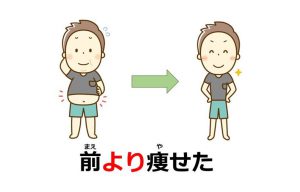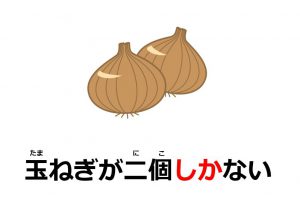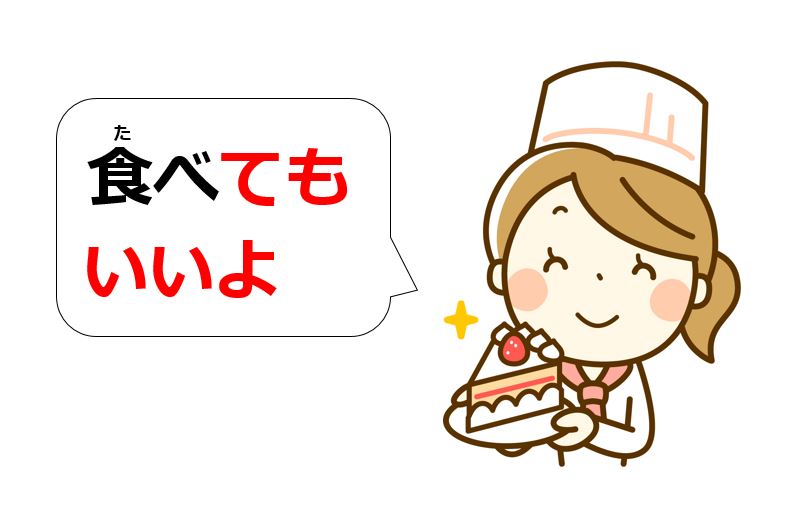Last time, you learned how to express prohibition and obligation, e.g. “宿題を忘れてはいけない (You must not forget your homework),” and ”復習をしないといけない (You have to review [it]).” Then, if you would like to say, “You don’t have to do your homework,” or “It’s better for you to do your homework,” what should you do? In this lesson, you will learn how to express permission and advice.
Explanation for How to Express Permission and Advice
| Table of Contents Permission: …てもいい Advice: …方がいい |
Permission means actions that you are allowed to do, while advice means actions that you are suggested to do. Permission and advice can be given to not only people whom you’re talking with, but yourself and the public. Let’s check how it works.
Permission: …てもいい
| [あなたは] | もう | 家に | 帰ってもいい(です)よ |
| [Topic / Subject] | Adverb | Destination | Verb: Permission |
| [You] can go home now. | |||
You can express permission by attaching もいい to the te-form. In conversation, it will sound more natural if you place the sentence ending particle よ. The いい (of てもいい) means “good” and thus you can replace いい with other words which have the similar meaning such as “大丈夫: alright” and “構わない: no problem.” Here, we will use いい because that’s the most common.
| 大きな声で騒いでもいい(です)よ。 [You] can make noise with a loud voice. |
| 明日は休みを取ってもいい(です)よ。 As for tomorrow, [you] can take a day off. |
| テレビを見てもいい(です)よ。 [You] can watch TV. |
| 昼の2時まで寝てもいい(です)よ。 [You] can sleep until 2:00pm. |
If you make interrogative sentences with てもいい, it means that you ask permission. You can also indirectly ask permission by using てはいけない (prohibition) like “Is it prohibited to do X?” In general, てもいい is more commonly used.
| クーラーをつけてもいい(ですか)? May [I] turn on the air-conditioner? |
| クーラーをつけてはいけませんか? => More modest (but, sounds a little unnatural). |
If you make negative sentences with てもいい, it means to permit you to not do something. In other words, it is unnecessary to do something. The conjugation is the same as the one for なくては (prohibition), but you replace ては with てもいい.
| 宿題はしなくてもいい(です)よ。 As for homework, [You] don’t have to do [it]. |
| お茶を買わなくてもいい(です)よ。 [You] don’t have to buy green tea. |
Japanese people sometimes drop も from てもいい, but the meaning will remain the same.
| 昼の2時まで寝てもいい(です)よ。 |
| クーラーをつけてもいい(ですか)? |
| お茶を買わなくてもいい(です)よ。 |
てもいい can be used to express your volition with a passive attitude. The nuance will be something like “I don’t want to do it, but if you request me, I can do it.” In this context, も cannot be dropped.
| 遊んでもいい(です)よ。 (Passive attitude) [I] can hang out [with you]. |
| 日本語で話してもいい(です)よ。 (Passive attitude) [I] can talk [with you] in Japanese. |
[adsense]
Advice: …方がいい
| 勉強した方が | いい(です)よ |
| Subject | Predicate |
| It’s better to study. | |
This is the sentence pattern that you learned in the previous lesson about comparison. This essentially means “it is better to do X [than not to do X],” and may be translated as “should” in English. Regarding the conjugation, you can just connect the ta-form with 方がいい. The sentence ending particle よ also takes an important role here, which makes sentences softer.
| 休んだ方がいい(です)よ。 It’s better to take a rest. |
| 本を読んだ方がいい(です)よ。 It’s better to read books. |
If you would like to place the より part, you can directly connect the plain form of verbs to より.
| 勉強するより休んだ方がいい(です)よ。 It’s better to take a rest than to study. |
| 映画を見るより本を読んだ方がいい(です)よ。 It’s better to read books than to watch movies. |
With this sentence pattern, tense is a little tricky. First, if you conjugate いい into the past tense, i.e. よかった, you can express actions which you didn’t take with regretful feelings like “I should have done it.”
| 薬を飲んだ方がよかった(です)よ。 [You] should have taken the medicine. |
| ちゃんと謝った方がよかった(です)よ。 [You] should have properly apologized. |
Second, you can actually connect the plain form with 方が, too. That way, your speech will sound like a general opinion rather than advice to the individual. Note: this is not a common expression. When you give advice, you should use the ta-form.
| ルールは守る方がいい。 (General opinion) As for the rule, it’s better to keep [it]. |
| ルールは守った方がいい。 (Individual advice) As for the rule, it’s better to keep [it]. |
| ルールは守る方がよかった。 => Wrong! よかった doesn’t work with the plain form. |
Third, if you give advice with negative sentences, you have to use the plain-negative form.
| 嘘をつかない方がいい(です)よ。 It’s better not to tell a lie. |
| 無理はしない方がいい(です)よ。 As for unreasonable things, it’s better not to do [it]. |
| タバコを吸わない方がよかった(です)。 It would have been better not to smoke. |
| 大学に行かない方がよかった(です)。 It would have been better not to go to university. |
Summary
- …てもいい expresses permission and can be translated as “can” or “may.”
- …なくてもいい expresses unnecessary actions and can be translated as “don’t have to.”
- …方がいい expresses advice and can be translated “better to do” or “should.”
- …方がよかった expresses advice with regretful feelings like “should have done.”
- With affirmative sentences, the ta-form with 方が is common.
- With negative sentences, the plain-negative form with 方が is common.
Great job! You have completed the modality (speaker’s feeling) section. Now, you are able to express various feelings in Japanese, which will greatly change your speech to be more colorful. If you feel difficulty in conjugating verbs, we recommend you review the previous lessons before moving to the next section. As you may notice, some forms, such as the polite form and the te-form, can be a base for various conjugations. Then, we have showed examples so far on the promise that there is no conjunction. Next, you will learn how to form compound sentences.

Japanese Comparison: より, …の方が, and …で一番

Expressions for Numbers and Amounts: も, だけ, しか, ばかり, and すぎる



